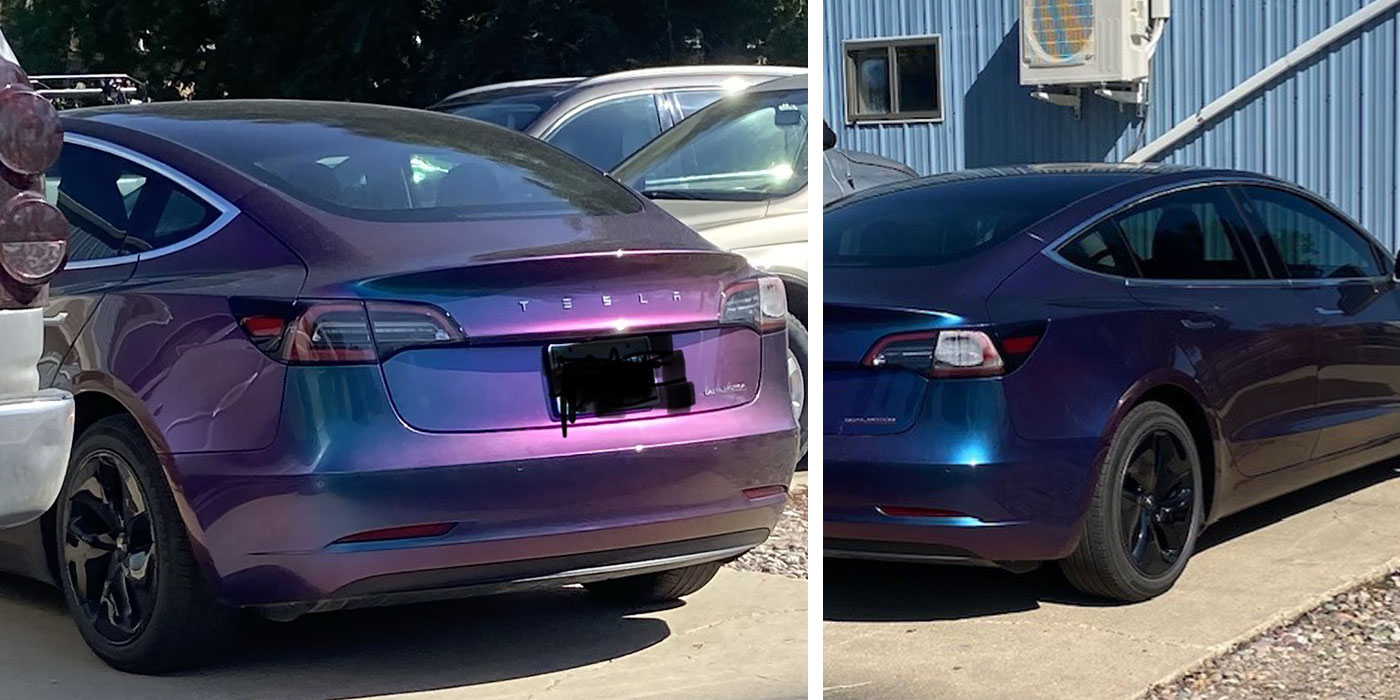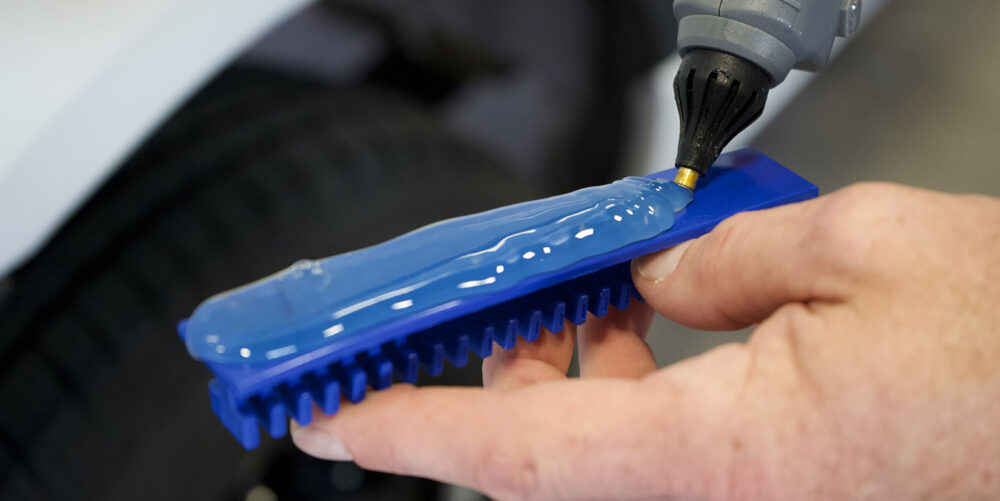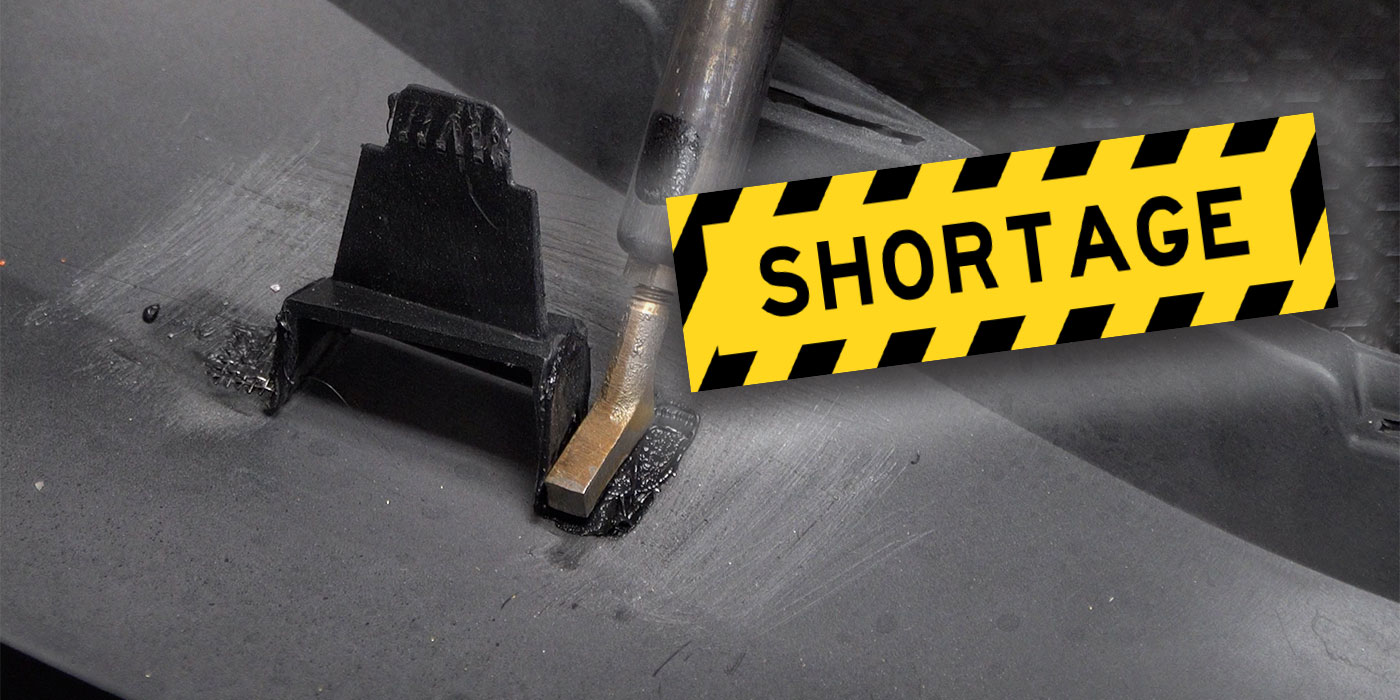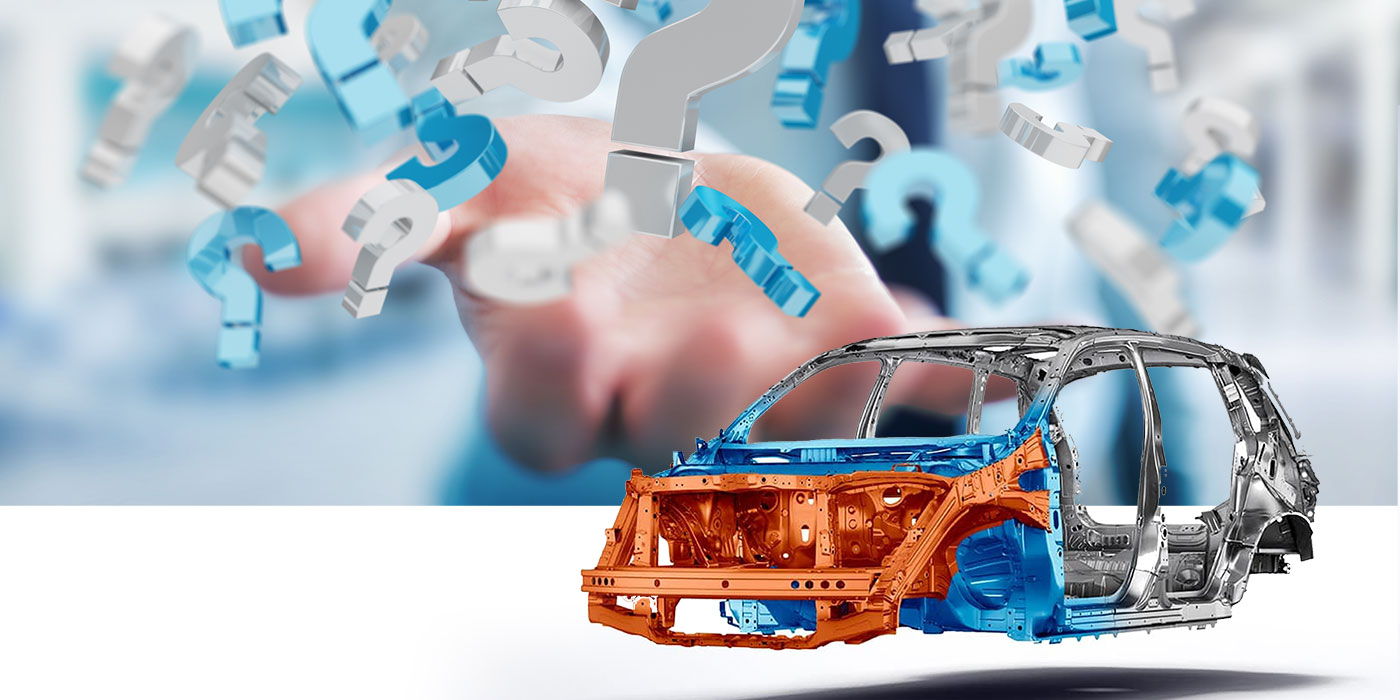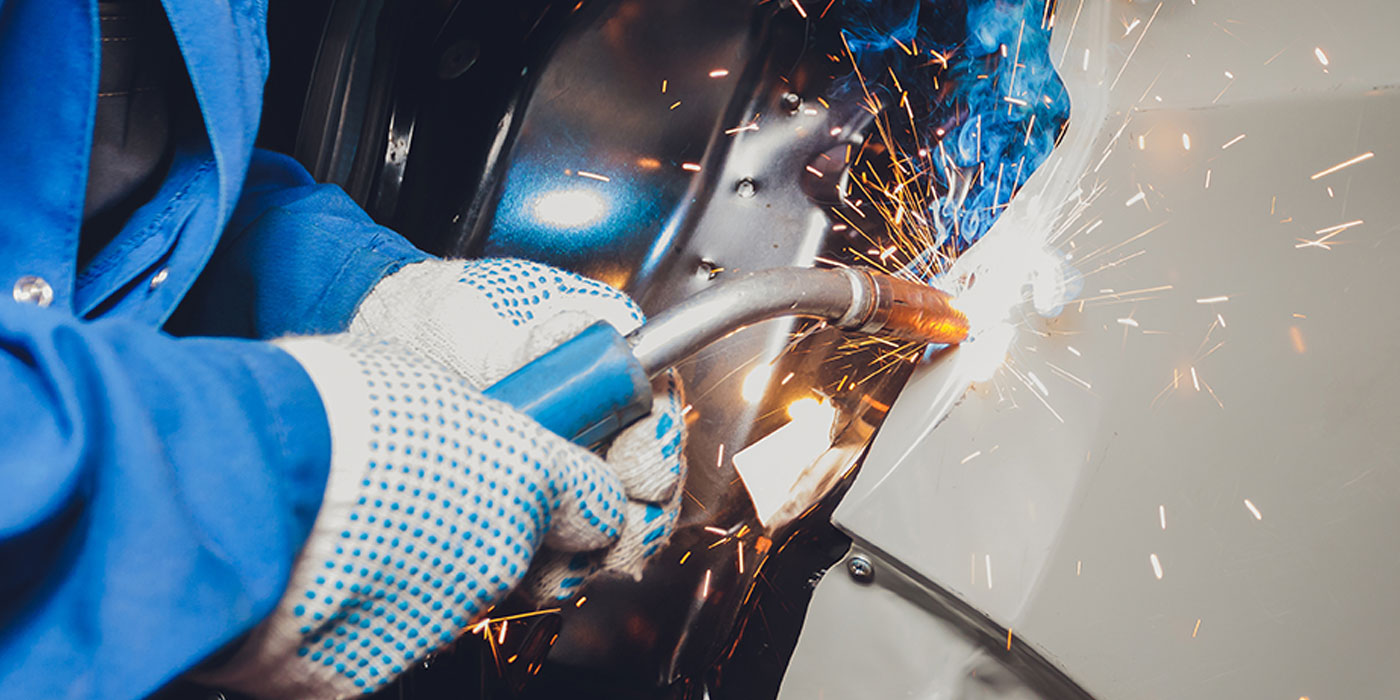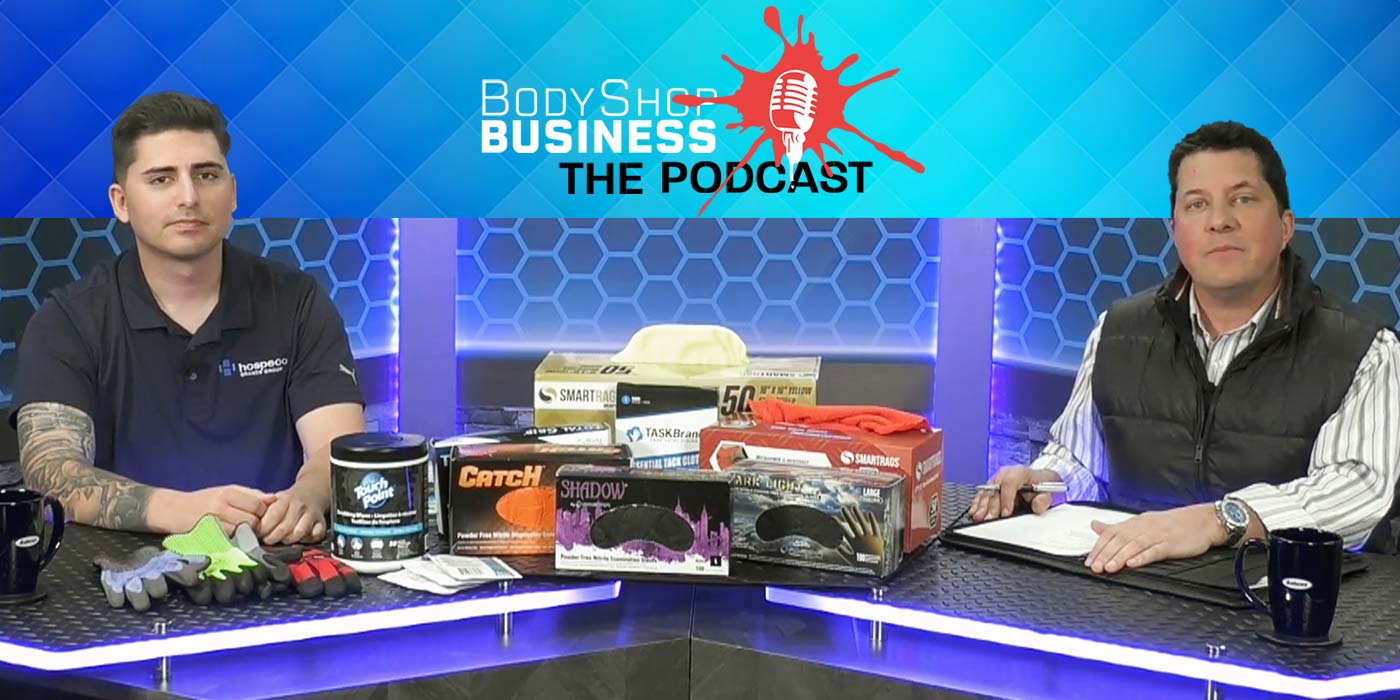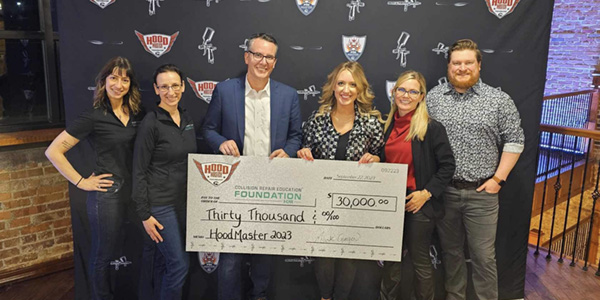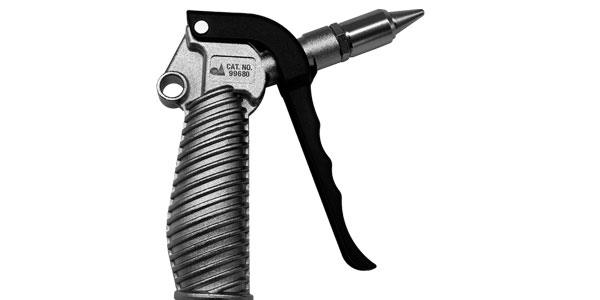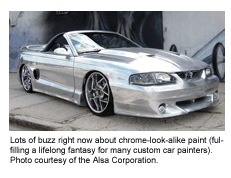
During the recent NACE show in Las Vegas, I made the rounds of the paint manufacturer’s display booths. (It’s nice to have them back at NACE, by the way.) My topic for this article is new paint technologies, and I was able to speak to someone knowledgeable at each of the booths. I simply asked that they tell me "what’s new" with their refinish offerings, and I heard some great things from everybody. In each case, the paint manufacturers are hard at work developing new products and technologies that will make your life in the shop faster, better and safer. Good news, indeed.
From new color systems to better clearcoats to faster color match to quicker processes to snazzy color effects, the world of refinish is changing quickly. I was able to lump what I heard into three areas:
- Color.
- Process improvements.
- New technologies.
Here’s my take on what I learned …
1. Color
•Time-saving spectrophotometer – One paint manufacturer has a new spectrophotometer. Their revamped software enables them to add new color qualities to their database without re-shooting all the possible matches. As you no doubt know, the most expensive part of anyone’s color camera (spectrophotometer) system is the time and effort it takes to generate the database of possible matches.
For example, it’s fairly simple to take a reading of a color. An important issue necessary to a good reading is a clean, smooth surface, but the reading from three to five angles above the color generates a graphic representation of the subject color pretty simply. The problem is finding a similar color graphic within the tens of thousands of possible colors each manufacturer has created.
It’s very much like fingerprints; with a minimum of training and some dusting powder, you could take a fingerprint from the scene of the crime. The expense is in creating the database of millions of possible criminals’ fingers.
This paint manufacturer’s new formulating software can be used to generate a database of possible matches by comparing the qualities of the new paint system to the original database electronically. The original color graphs had to be read and recorded one color at a time.
Bear in mind that each paint manufacturer has thousands of man-hours and millions of dollars tied up in creating their color formulas. Expect to see steeply increased levels of security from all paint manufacturers to ensure the data they’ve so laboriously created remains exclusive to their customers. Clever encryption and multiple double checks on who has access to the color data will quickly become the order of the day. Make sure your shop is registered and authorized to receive and employ all the color tools your paint brand makes available.
•Ability to tie match to VIN of vehicle you’re repairing – Another tool in the color match wars is the paint manufacturer’s ability to tie their match to the VIN of the actual vehicle you’re painting. If they can determine that certain car manufacturing plants have a color that’s drifted off color standard in a consistent direction (i.e. all code xyz1 cars are darker than spec or all cars painted between the 10th and the 15th of some month are slightly redder than standard), they can develop a good match to the non-standard color.
Many alternate formulations focus only on getting the flake identification correct. Metallic effects are hard to control at the OEM level, too. Offering actual variant color chips or building a match based on production dates, the paint manufacturer’s goal is the same: to help you find a suitable color match fast.
Do your part to help them by always checking the VIN number and production date when you begin on the repair. When you discover the possible computer formulas include one for such and such, you don’t have to return to the car to find out if it applies to your car. The best estimators include a full description of the vehicle on the RO, down to VIN and license plate numbers. It saves everyone precious production time if they have the right information in front of them.
•Automatic pouring machines – Providing a machine to actually pour the mixing tints into the can offers a time savings as well. One paint manufacturer estimates that fully 20 percent of body shop mixes have a pouring error that would affect the color match. Remember that over-pouring clear binders into a mix has little effect on match. Likewise, low strength whites and silvers are slow to move a color match if over-poured.
However, with more and more high-strength and super-high-strength mixing toners in today’s colors, getting the exact quantity specified in the mix into the can is a real necessity. But automatic pouring machines only work productively if the painter does something else while the machine pours the tints. If the painter just stands and watches the machine pour (after the initial novelty wears off), you’re burning daylight, boys. If the painter spends the time locating the next color or taping the next panel or spraying the next coat, the automatic machine will increase accuracy and production.
•Colored primers – Colored primers offer an opportunity to increase paint production, too. One paint manufacturer is offering a system of five intermixable colored primers. Their goal is to use the best colored undercoat to reach the best match in the fewest coats.
Several manufacturers offer shadable primer/sealer systems. By combining gray-shaded primers with each other or with colored mixing toners, painters can apply the correct color undercoat and save significant time in the painting process.
2. Process Improvements
Process is just the right word to describe the difference between paint shops that turn out hundreds of refinish hours each week and those that struggle to turn out 40. Your shop would benefit if you would research, develop, implement and enforce refinish procedures with the help of key technicians.
Why ask the painters? Why not just do what the consultant in the magazine said?
No one knows more about how to streamline a process than those who do it every day. While the body shop production consultants have hundreds of clever ideas to increase workflow, they depend on the technicians in your shop to implement them.
Ask for your technicians help and listen to their input. But never be confined to just what worked in the past; our industry changes every day.
Many of these new pressures are forcing cycle time of the repair down markedly. Figure it out first, revise your process and enjoy the increased revenues while the rest of the industry catches up to your shop. Ready, aim, fire – not ready, fire, aim!
As a team, examine each step in the repair process as the work progresses through the paint shop. And look for ways to remove steps entirely.
Once your team has identified their fastest quality procedures, write them down and follow them. All the big, shiny shops I visit have specific, exact written steps to accomplish their repairs with the highest quality and the shortest completion times. You can, too.
A few process improvements I learned about at NACE (and a few I already knew about):
•Apply primer surfacer without the spray gun – Several paint manufacturers have systems that will allow the painter to apply primer surfacer to the vehicle without using a spray gun. Whether by rubber squeegee or textured roller, applying the primer without masking for overspray or waiting for dry times between coats eliminates significant time from the repair.
•Use heat – Lowering the time the cars spend in the booth is part of every successful paint shop process. As always, heat can play a big role in reducing paint cycle times. Heat drives solvents out of the paint film and into the air more quickly than they would evaporate at room temperature. Heat cross links resins faster than they would unite at normal temperatures. Given that these things are scientifically proven and true, wouldn’t heat reduce the time required to paint anything? Yes!
Get out your heat lights, tune up your air replacement furnace and save some time today.
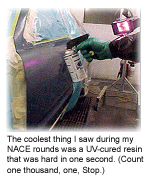 •Apply wet on wet on wet – Several paint manufacturers have
•Apply wet on wet on wet – Several paint manufacturers have
systems that can be applied wet on wet on wet. Bear in mind that it
takes specially designed resins to do that without trapping solvents
inside the thick wet paint film. This is an area that may require the
addition of heat, too.
Pre-heating the substrate before priming is a simple change but may
significantly reduce your paint times. All this presumes the painter is
making good use of his newfound time. If your painter just uses the
time saved by new products or procedures to have another cigarette, it
won’t help shop profits much.
If you haven’t tried changing how things are painted and delivered in
your shop recently, vow to try one or two new methods, products or
systems to complete your paint work in less time. They just might work!
3. New Technology
•Nanotechnology – Plastic repair took a giant step forward for one paint manufacturer recently. Employing a backbone technology of great interest across all chemistry, their system uses nanotechnology.
Say what?
One nanometer is one one-millionth of a meter and is so small that it’s used to measure the difference in wavelengths of electromagnetic radiation. These are particles so tiny that they approach the size of a single atom.
They provide a useful technology because they’re so small they can be grafted onto (or into) other resins and become part of the other resin. (Previous resin particle sizes created coatings that weren’t grafted together.)
A nanoparticle is mighty small but opens the door to advances in all sorts of resin technologies. By blending itself with other resins already on the car (like plastic bumpers), the coating containing the tiny particles has tremendous adhesion.
Possible future uses include color pigments that combine using nano particles to form more durable or more visually exciting color effects. Adding this technology to topcoat clears would conceivably increase durability, gloss retention and of course, adhesion.
Once again the paint manufacturer’s goal was to improve quality by employing a superior chemistry and, at the same time, eliminate steps and process time during repair. With higher quality and lower cycle times, everyone wins. Stay tuned for even more desirable technology leaps from all the major paint companies. The paint resin future is bright!
•Chrome-look-a-like paint – Another new technology that has lots of buzz right now is the chrome-look paint. Over the last year or so, every painter seems to have a tale of some chrome paint his neighbor’s dog saw somewhere that looks just like chrome plating. While this appears to fulfill a lifelong fantasy for custom car painters, it isn’t "just" like chrome yet.
Several methods are being studied to get the sprayed-on coating to look like chrome. And all of them need to be applied over a black basecoat – a perfectly smooth black basecoat.
How smooth? A common surface preparation suggestion is to sand the primer surfacer with 3,000 grit, spray the black, clear the black, sand the clear with 3,000 grit and then spray the "chrome" coating. The chrome coating will need to be cleared with a "suitable" clear quickly to prevent any marring on the super-smooth metal pigments. A "suitable" clear is one that won’t shift, float or disturb the fragile flake alignment when applied over the metal base. Not every clear will work, and it’s likely that "chrome paints" will require specific clears to be compatible.
There are several methods around to create the fake "chrome" pigment. One school of thought holds that the solution lies in very small, very finely ground micas. Another school says that creating a flake using "vacuum deposition" provides a metalized flake that’s very flat (sucked down flat) and therefore reflects light more like chrome. Still another school suggests that once you have the flattest flake possible, the edges of the flake must be chemically scrubbed or polished to prevent the eye from seeing the dark flake edge we all know so well. Another method to create spray-on chrome uses actual chrome-plated foil as the reflectant. In each case, the flake must be applied to a surface as smooth as a mirror to reflect light seamlessly.
Another obstacle to be overcome is that the flake must be applied with little or no clear resin to suspend it in. For example, if you shoot the flake using just solvent, when the solvent evaporates, the flake should all lay flat on the sanded black base. If you suspend some flake in a layer of clear, it may not lay flat enough to imitate chrome.
Rest assured. All the paint companies have got each other’s product in their labs and are busy poking away at a workable solution. Pretty cool if they can get the flakes oriented right and make it all work and adhere.
•
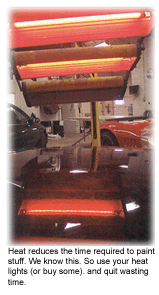 UV-curing – Ultraviolet light is hardly new. UV-cured finishes are
UV-curing – Ultraviolet light is hardly new. UV-cured finishes are
hardly new either. However, the coolest thing I saw during my NACE
interviews was a UV-cured resin that was hard in one second. (Count one
thousand, one. Stop.) Fast, eh? The gentleman who I met who performed
this feat of chemical magic drew a little bead of liquid resin from a
screw-top tube across his name on his business card. He removed a tiny
LED (light emitting diode) UV emitter that used no more power than a
flashlight and was only slightly larger than his business card. He held
it over the liquid bead, pressed the "on" button, held for one second
and handed me his card with a cured, clear resin over his name. Wow!
Here’s what I’ve learned about what made this possible: First you
should know that UV cure works best when using clear resins. Pigment
tends to get in the way of the UV waves (roughly 180 to 400 nanometers
long) and prevent complete cure. Painters, as you know, don’t much like
clear primers or sealers. It’s very hard to see where you’ve been with
a clear undercoat.
Second, the "flashlight battery" power source only powers a very mild
form of UV wave that’s just on the edge of visible light. Sunlight
contains mostly UV-A waves and a little UV-B. UV-C waves are the most
powerful and the most harmful. Visible light begins where ultraviolet
waves meet visible violet waves. The UV-V (for visible) light wave is
about 395 nanometers; the color purple is about 400 nanometers.
Other applications for this type of UV cure include inkjet printer inks
and various adhesives. Because the level of energy is so low, the
little bead of resin on his business card got hard but wouldn’t
necessarily be very strong. Nonetheless, it was a heck of a trick.
Most refinish UV applications are currently in undercoats. While no one
sees a use for UV-cured basecoat colors (you need the flash time and
the solvent to distribute the reflective flakes properly), several
paint companies see a future in UV-cured clearcoats.
Durability is one important issue. If the product cures using UV and
the main enemy of any automotive finish is degradation from UV from the
sun, how will they balance the ability of the resin to both cure and
remain durable?
Think of it like suntan lotion; you want enough protection to not burn
to a crisp but not so much that you won’t get a tan. Likewise, UV cure
can create a very hard finish (one of its desirable qualities), but it
would have to be soft enough to allow most shops to cut and buff before
customer delivery. Clearly (no pun intended), there’s more work to be
done. However, the UV undercoat and spot putty rodeo is about to get
into full swing. Ask for a demo in your shop; this stuff is really fast!
What’s the most expensive thing in a body shop, class? Correct, labor
time. Any equipment, product, process or technology that saves labor
time is worth investigating. UV-sensitive resins cure very fast and as
a result, save the painter time. In fact, they’re the fastest curing
resins known to refinish.
UV cure has been employed in manufacturing for some time. These resins
are typically UV-B or UV-C cured and require safety and application
constraints just not possible in a body shop.
Safety with any UV system is important. Both your skin and your eyes
can be harmed by exposure to even the less aggressive UV-A curing
lights that body shops use. Your skin will turn red and burn just like
a bad sunburn. Avoid exposure to the light and wear long sleeves and
gloves. Protect your eyes by avoiding looking directly at the light and
by wearing UV-rated polycarbonate safety glasses. Remember, tinted
lenses aren’t an indication of UV filtering. Read the specs for your
specks to make sure you have the right glasses!
Another safety concern is a spill of UV-cured products, since they
won’t harden by evaporation or cure in air; they’ll remain wet and
sticky until someone cleans them up. That someone wearing rubber gloves
and a respirator, of course!
UV cure has been in use in screen-printing for approximately 50 years,
and speed was the motivator for them, too. Using UV-cure inks, the
T-shirts or political signs could be run off the printing press under
the UV light and stacked or packaged with no dry time.
UV resins don’t have a pot life, don’t contain lots of solvent that
must escape before cure takes place, allow sanding within just minutes
and can be re-coated with other products very quickly. If all that
sounds to you like UV cure paints and resins are going to loom larger
in your body shop life, I’d say you’re right.
Painting a Picture of the Future
So what’s the upshot of my trip around the NACE floor? No paint manufacturer is resting on past accomplishments. Everyone is hard at work developing products and procedures that add quality and remove production time.
Hooray for progress!
Writer Mark Clark, owner of Professional PBE Systems in Waterloo, Iowa, is a well-known industry speaker and consultant. He’s been a contributing editor to BodyShop Business since 1988.

